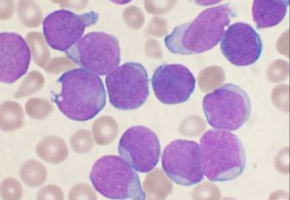
New research is shedding light on how leukaemia cells can survive cancer treatment, suggesting new possibilities for stopping them in their tracks.
Leukaemia is cancer of the blood and it has one of the highest cancer mortality rates.
This is partly because there is a high relapse rate, as some cancer cells can survive the initial treatment.
These surviving cells are often resistant to treatment, allowing the cancer to spread and become fatal.
How these treatment-resistant cells survive initial chemotherapy is not well understood.
One popular theory has been that they sit hiding in specific niches within the bone marrow that usually harbour blood stem cells - basic cells that can become all other blood cells.
However, new research in mice, and validated with human samples, has revealed that certain leukaemia cells do not sit and hide.
The research was led by a team at Imperial College London with colleagues from the Francis Crick Institute in London and the University of Melbourne in Australia, and is published in Nature.
Instead, to the researchers' surprise, the cells were scattered throughout the mouse bone marrow both before and after treatment, and they were moving around rapidly.
After treatment, the leukaemia cells that survived were seen moving faster than those before treatment.
The researchers suggest that the act of moving itself may help the cells to survive, possibly through short-lived interactions with an array of our own cells.
Study leader Dr Cristina Lo Celso from the Department of Life Sciences at Imperial said "We expected the cells that survived treatment to be sat in particular niches, but instead they are very active throughout the bone marrow. We now know that it would be ineffective to target particular niches in the bone marrow to tackle treatment-resistant leukaemia.
"Now that we know that the cells don't hide, we can explore why that is and how their movement helps them to survive.
Ultimately we want to find out whether we can stop the movement, and whether this could kill the treatment-resistant cells.
"This research is still in its early stages, but we believe we have already gained valuable insights to open up new avenues in the development of novel, more effective leukaemia treatments."
The team's investigation into leukaemia cells' behaviour also revealed that they actively attack bone cells, which are known to support healthy blood production. The researchers believe this insight could help scientists to develop treatments to safeguard production of healthy blood cells in leukaemia patients.
Study co-author Dr Delfim Duarte, also from the Department of Life Sciences at Imperial, said "Our study supports the idea that, at least in this leukaemia, new therapies should target the cancer cells themselves instead of the surrounding normal stromal cells to better eradicate the disease."
Dr Edwin Hawkins, who worked on the project at Imperial and is now at the Walter and Eliza Hall Institute of Medical Research in Australia, added: "Our work also suggests that protecting normal stromal bone cells from the attack of leukaemia cells can have wide implications in the support of healthy blood cell production. Keeping blood cell levels up would prevent anaemia, infection and bleeding."
To investigate the working of leukaemia at the cellular level, the team used a technique called intravital microscopy that allows high-resolution fast imaging of live animals.
The team used mice with a particularly deadly type of leukaemia called T cell acute leukaemia and tracked the movement of disease cells before and after treatment.
Moreover, through collaboration with the Francis Crick Institute and the University of Melbourne, they were able to demonstrate that the findings hold true in human samples too.
Source: Nature